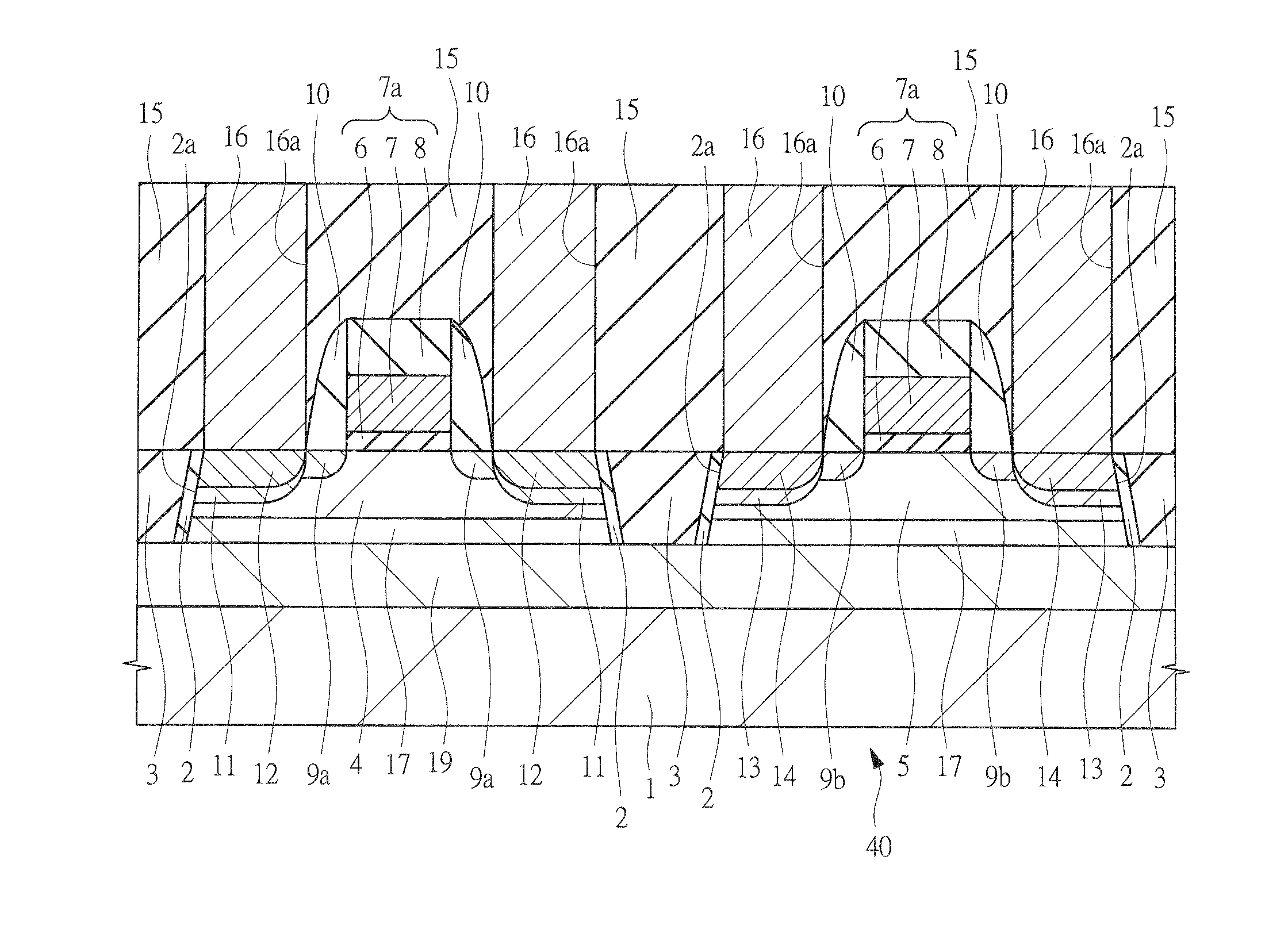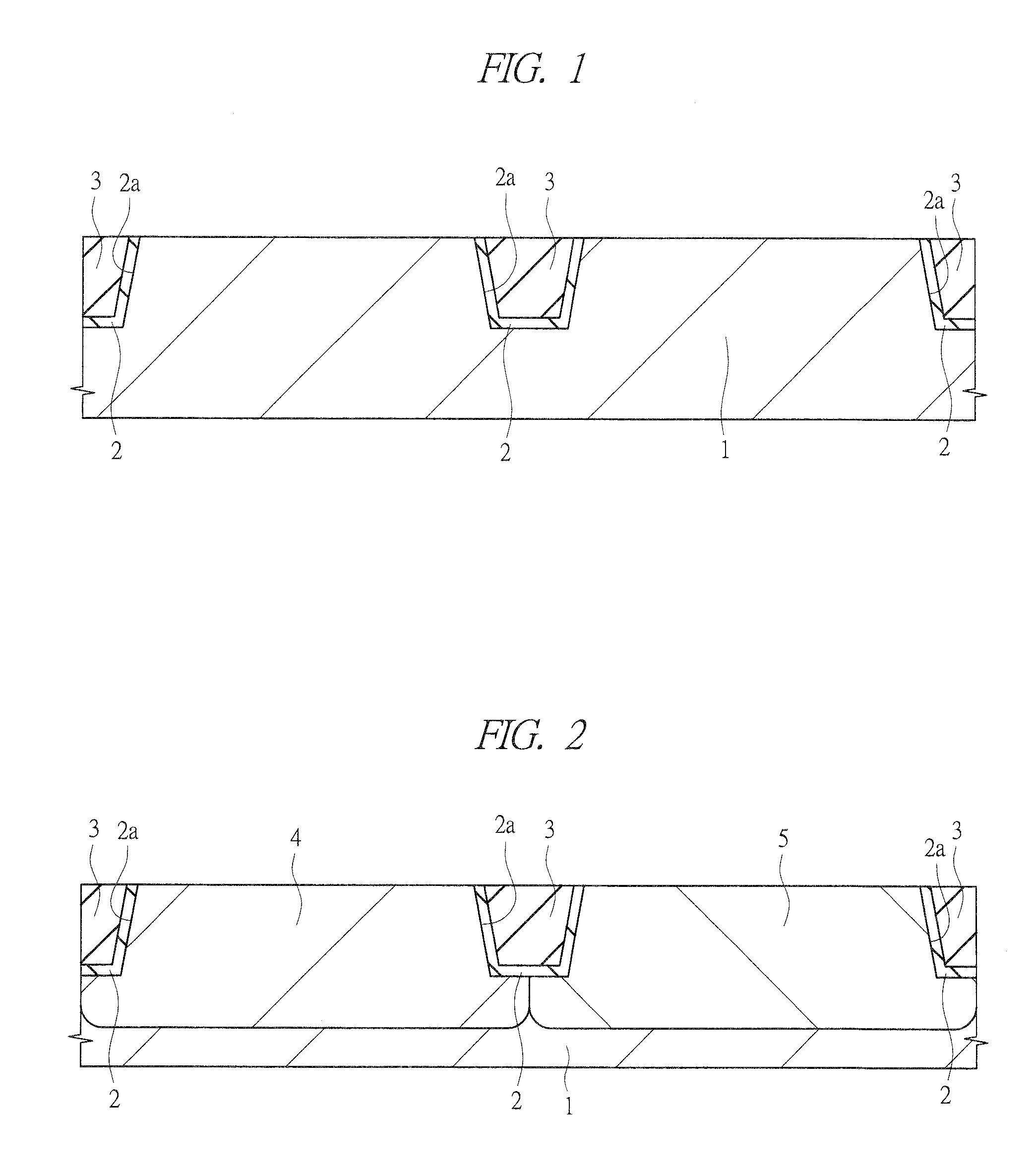Semiconductor device and manufacturing method thereof
- Summary
- Abstract
- Description
- Claims
- Application Information
AI Technical Summary
Benefits of technology
Problems solved by technology
Method used
Image
Examples
first embodiment
[0042]The present embodiment is applied to a manufacturing method of a CMIS, and will be described with reference to FIGS. 1 to 12.
[0043]First, as illustrated in FIG. 1, shallow trenches 2a are formed in a main surface of a silicon substrate 1, and an inside of the shallow trench 2a is thermally oxidized at temperature of about 1000° C. to form a thermal oxide film 2 having a thickness of 5 to 20 nm. And then, a buried oxide film 3 is deposited inside the shallow trench 2a by a CVD method or a sputtering method, and then, annealing is performed for one to two hours at 1000 to 1150° C. under a diluted oxidizing atmosphere or a nitrogen atmosphere to densify the buried oxide film 3 aiming at reducing its voids. Further, excessive buried oxide film 3 on the silicon substrate 1 is removed to be flattened by CMP or etch-back, so that a device isolation structure is formed.
[0044]Next, as illustrated in FIG. 2, a surface of the silicon substrate 1 is thermally processed at 900° C. under an...
second embodiment
[0061]In recent years, efforts to improve electric properties have been made by depositing a layer including SiGe on a semiconductor substrate such as a strained Si substrate and forming a Si epitaxial layer on the layer to give a strain caused from SiGe to the Si epitaxial layer. This is because the strained Si has a high electron mobility, so that the operation speed of a device such as an LSI can be improved. In the present embodiment, a CMIS having a SiGe layer will be described.
[0062]First, as illustrated in FIG. 13, a SiGe layer 17 is formed on a silicon substrate 1 by an IBS (ion beam sputtering) method, and a silicon layer 18 is formed on the SiGe layer 17 by epitaxial growth.
[0063]Next, while a device isolation structure is formed in the silicon layer 18, processes after this formation are performed similarly to those of the first embodiment.
[0064]That is, first, the device isolation structure formed of a thermal oxide film 2 and a buried oxide film 3 is formed in the silic...
PUM
 Login to View More
Login to View More Abstract
Description
Claims
Application Information
 Login to View More
Login to View More - R&D
- Intellectual Property
- Life Sciences
- Materials
- Tech Scout
- Unparalleled Data Quality
- Higher Quality Content
- 60% Fewer Hallucinations
Browse by: Latest US Patents, China's latest patents, Technical Efficacy Thesaurus, Application Domain, Technology Topic, Popular Technical Reports.
© 2025 PatSnap. All rights reserved.Legal|Privacy policy|Modern Slavery Act Transparency Statement|Sitemap|About US| Contact US: help@patsnap.com



